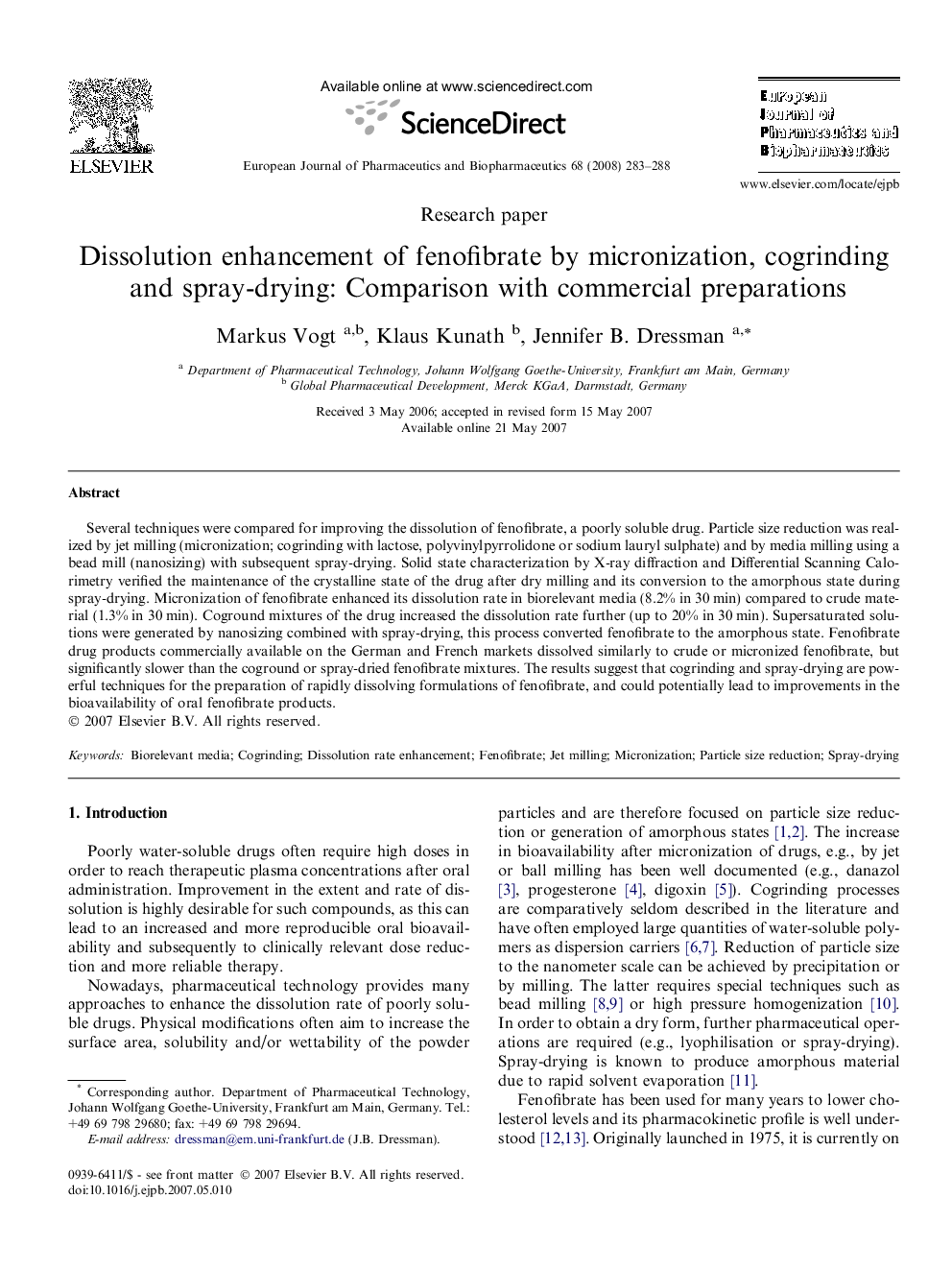| Article ID | Journal | Published Year | Pages | File Type |
|---|---|---|---|---|
| 2085670 | European Journal of Pharmaceutics and Biopharmaceutics | 2008 | 6 Pages |
Several techniques were compared for improving the dissolution of fenofibrate, a poorly soluble drug. Particle size reduction was realized by jet milling (micronization; cogrinding with lactose, polyvinylpyrrolidone or sodium lauryl sulphate) and by media milling using a bead mill (nanosizing) with subsequent spray-drying. Solid state characterization by X-ray diffraction and Differential Scanning Calorimetry verified the maintenance of the crystalline state of the drug after dry milling and its conversion to the amorphous state during spray-drying. Micronization of fenofibrate enhanced its dissolution rate in biorelevant media (8.2% in 30 min) compared to crude material (1.3% in 30 min). Coground mixtures of the drug increased the dissolution rate further (up to 20% in 30 min). Supersaturated solutions were generated by nanosizing combined with spray-drying, this process converted fenofibrate to the amorphous state. Fenofibrate drug products commercially available on the German and French markets dissolved similarly to crude or micronized fenofibrate, but significantly slower than the coground or spray-dried fenofibrate mixtures. The results suggest that cogrinding and spray-drying are powerful techniques for the preparation of rapidly dissolving formulations of fenofibrate, and could potentially lead to improvements in the bioavailability of oral fenofibrate products.
